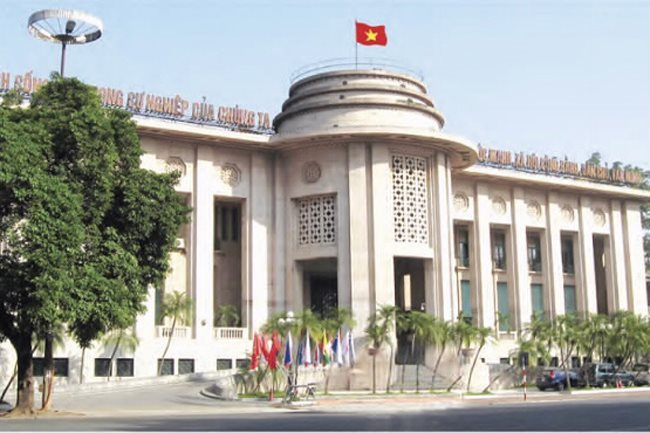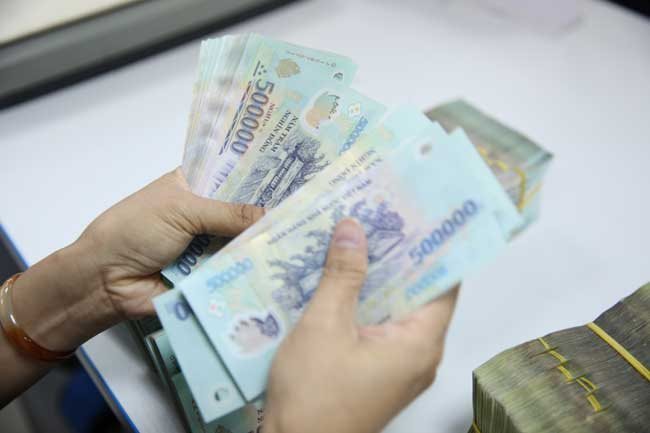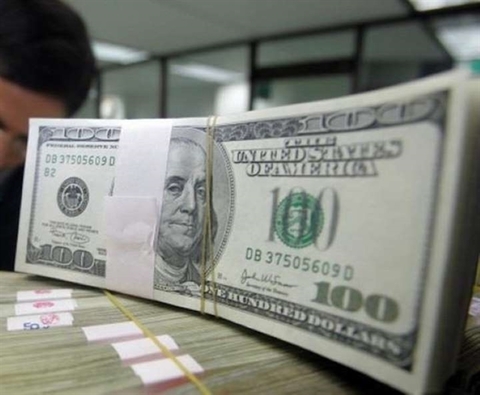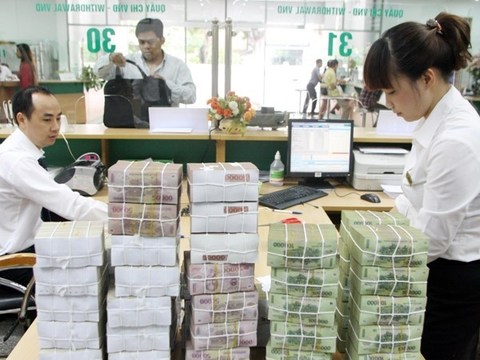2019: Remarkable year for banking sector
2019: Remarkable year for banking sector
The year 2019 for the banking sector was marked by many positive events, such as the State’s successful policy reforms to help credit institutions operate effectively.

Interest rate adjustment policies
In September, the State Bank of Vietnam (SBV) lowered key interest rates for the first time since 2017. Accordingly, the annual refinancing rate was reduced from 6.25% to 6% and the rediscount rate, from 4.25% to 4%.
Two months later, the central bank reduced the maximum annual deposit rate for savings of one month to less than six months from 5.5% to 5%. In addition, the highest rates for non-term deposits for the same duration at people's credit funds and micro credit institutions fell from 6% to 5.5%.
Moreover, the reserve ratio in local currency at credit institutions has been cut from the previous 1.2% to 0.8% per year since December 1. The interest rate for the excess amount in Vietnamese dong remains 0%.
The interest rates were also revised for foreign currency reserves, at 0% for the compulsory level and 0.05% per year for the excess amount.
The State Treasury enjoys a deposit rate in Vietnamese dong of 1%, while that of foreign currencies fell from 0.5% to 0.05% per year.
Tighter control over capital for risky sectors
The SBV asked credit institutions to gradually reduce the proportion of short-term capital for medium- and long-term loans from the current 40% to 30% over the next three years.
In addition, the credit risk coefficient applied to home loans was raised from 150% to 200%.
These policies demonstrated the central banks’ determination to tighten credit for risky sectors, such as real estate.
Warning against deposit rate hikes
In late August, the SBV asked credit institutions to follow regulations on the deposit rate hike or risk heavy penalties as some local credit institutions and branches of foreign banks had increased their deposit rates sharply for some tenors in Vietnamese dong.
According to the SBV, the banks’ actions undermined the stability and sustainable development of the banking system and might lead to a race to hike deposit rates among credit institutions, causing volatility in the monetary market.
Therefore, credit institutions must ensure the stability of their deposit rates, adopt solutions to ensure the safety of banking activities, control their credit growth in line with their capital mobilization ability and enhance their control over credit for risky sectors.
The central bank will supervise the deployment of solutions to ensure the deposit rate stability of credit institutions and will impose strict penalties on those caught violating regulations and the directions of the SBV, including reducing their credit limits.
The warning has been effective as no banks have offered deposit rates higher than 8% since then.
Technology application
In 2019, local banks enhanced the application of advanced technologies of the fourth Industrial Revolution. Specifically, many banks replaced their magnetic cards with chip cards and developed mobile apps, bolstering noncash payments.
The boom in technology applications has encouraged fintechs to join the finance sector.
In early November, the SBV consulted with the relevant agencies on draft regulations on mobile money issued by intermediate payment service providers.
Also, peer-to-peer (P2P) lending has developed rapidly without a legal corridor, posing a high risk to both lenders and borrowers. Therefore, the central bank is building draft regulations on P2P lending.
First Vietnamese bank’s representative office opened in U.S.
The Bank for Foreign Trade of Vietnam (Vietcombank) on November 1 opened its first representative office in the United States. The office was also the first of its kind opened by a Vietnamese commercial bank in this market.
Vietcombank Chairman Nghiem Xuan Thanh said the event proved that the Vietnamese banking system has integrated into the global market and met international standards.
This year, the bank expected to earn nearly US$1 billion in pretax profit, setting a new record for the local banking sector.



















